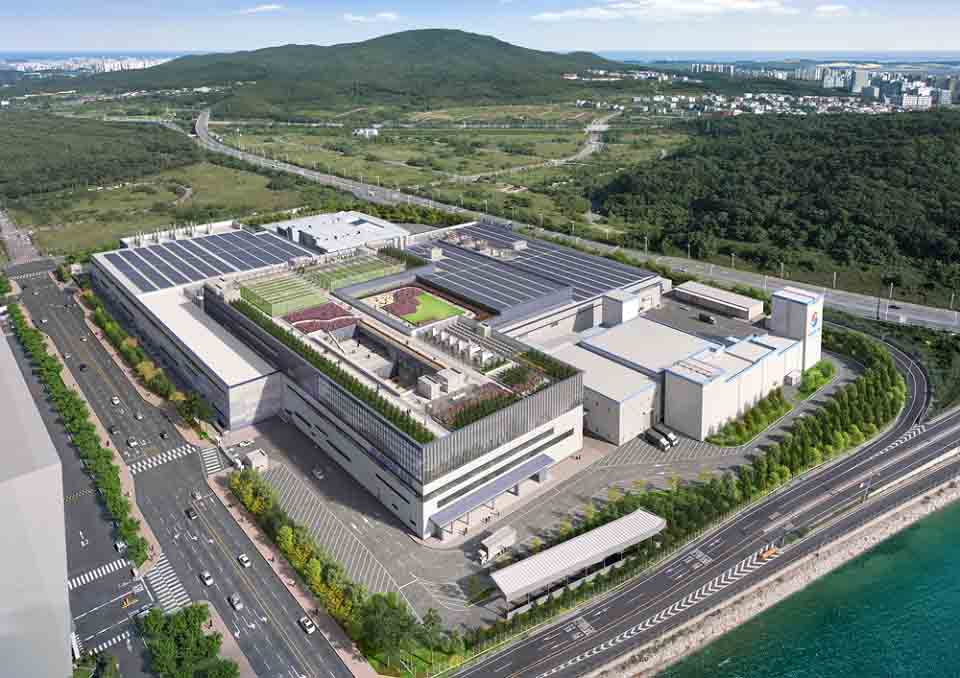Aerospace
Korean Air to open Asia’s largest aircraft engine MRO cluster

Korean Air has started building an aircraft engine maintenance cluster at Incheon International Airport in Unbuk. The facility is expected to be operational by 2027.
This new complex, which will be the biggest of its kind in Asia, will strengthen the airline’s capacity to maintain aircraft engines and secure its place in the aviation maintenance, repair, and overhaul (MRO) industry.
Over 140,000 square metres are divided into seven levels of the new engine maintenance facility. The 578 billion won facility is being built by Kolon Global, and it will be positioned next to the Engine Test Cell (ETC) that the airline has been using since 2016.
Engine maintenance was traditionally handled by Korean Air at its Bucheon facility, with additional final performance testing conducted at the ETC in Unbuk. By centralised all stages of engine maintenance at one location, the engine maintenance cluster will strategically consolidate and streamline this process, improving operational efficiency.
Additionally, Korean Air plans to greatly improve its capacity to service aircraft engines, increasing from 100 to 360 each year, and servicing a wider range of engine types. Six engine models are now overhauled by the airline: General Electric’s GE90-115B, CFM International’s CFM56, and Pratt & Whitney’s PW4000 and GTF.
Three additional engine models, including GE’s GEnx and CFMI’s LEAP-1B, are being added to the lineup as part of the expansion. Additionally, the prospect of maintaining Asiana Airlines’ engines—including the Rolls-Royce Trent XWB powering the Airbus A350—is being investigated by the carrier. In order to increase the competitiveness of the domestic aircraft MRO business and lessen reliance on foreign maintenance services, the new maintenance cluster is anticipated to create over 1,000 new jobs.

Aerospace
When Ratan Tata was denied entry to the airfield at the Aero India show, he waited

During our visit to Aero India 2019, we had the unexpected opportunity to see Ratan Tata at the event, which was a thrilling moment for us. However, there was a surprising hiccup when the security staff didn’t allow him to enter due to a lack of a security pass.
Despite this, he remained calm and patiently waited for about 20 minutes until a member of the Tata team brought him the required pass, after which he calmly proceeded inside. It was a humbling sight, showcasing his composed demeanor even in such situations.
Ratan Tata ji is not only a renowned industrialist but also a trained pilot, holding a pilot’s license. In 2007, he became the first Indian civilian to fly the F-16 Falcon during the Aero India show in Bangalore—a proud moment for the nation.
His passion for aviation extended beyond flying, as he played a key role in shaping India’s aerospace industry. Under his leadership, Tata ventured into manufacturing and maintaining aerospace components while upholding its legacy of quality. Notably, Tata’s collaboration with Airbus to develop and manufacture the C295 aircraft is a testament to its growing influence in the sector.
-

 Aviation2 months ago
Aviation2 months agoMicrosoft Flight Simulator Raises $3 Million to Bring Back the An-225 Mriya
-

 Airlines2 months ago
Airlines2 months agoQatar Citizens Can Travel to the United States Without a Visa
-

 Aviation2 months ago
Aviation2 months agoQatar Airways bans these new Electronic Devices on plane
-

 Airlines2 months ago
Airlines2 months agoJapan Airlines Rolls Out Free Domestic Flights to International Passengers
-

 Travel2 months ago
Travel2 months agoQatar Airways Launches Four Additional Flights from Amsterdam
-

 Defence2 months ago
Defence2 months agoWhich Country Has the Largest Fleet of Fighter Aircraft?
-

 Airport2 months ago
Airport2 months agoWestern Sydney Airport Welcomes Its First Plane After 6 Years of construction
-

 Airlines4 days ago
Airlines4 days agoDAMAC Air: Dubai’s New Luxury Airline Offers Free Flights for Registration








